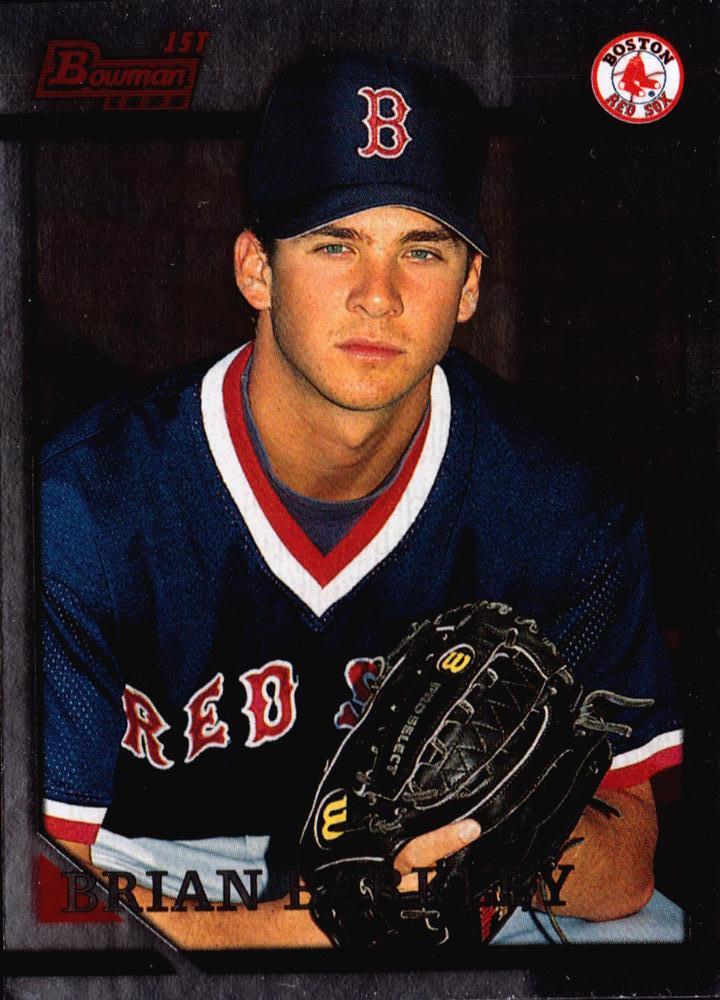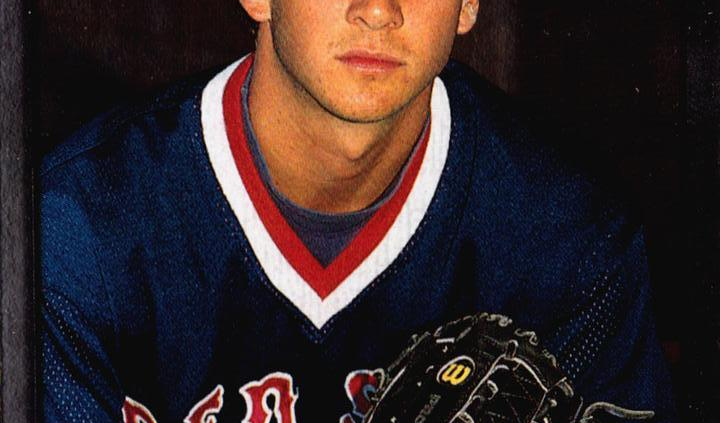Brian Barkley
 Brian Barkley’s career path has taken him from pitching major-league baseball to becoming a practicing pediatrician.
Brian Barkley’s career path has taken him from pitching major-league baseball to becoming a practicing pediatrician.
When he began in pro ball, there had been the possibility of confusion with another pitcher of a nearly identical name.
In the summer of 1995, the Boston Red Sox gave brief duty (2 1/3 innings over three games) to a left-handed pitcher named Brian Bark. He never gave up a run – earned or unearned – and had no decisions, but that was the sum total of his major-league experience.
The Red Sox had another left-handed pitcher in their system with a similar name at the same time. Brian Edward Barkley was in Boston’s minor leagues from 1994 to 2000, working in 133 games over the seven seasons, starting 122 of them. In 1998, he had two brief stints in the majors, appearing in four games in May and June and two more in the second half of September. Brian Barkley worked a total of 11 innings, likewise without a decision, facing 59 batters and recording a 9.82 ERA.
The two pitchers were of different physical stature – Brian Bark was 5-feet-9 and Brian Barkley was 6-feet-2, and both pitched only briefly in the majors. Both have gone on to careers outside of sports which have given them considerable stature and prominence in their respective fields.
Brian Barkley was born in Conroe, Texas on December 8, 1975. The county seat of Montgomery County, it lies about 40 miles almost due north of Houston. Brian graduated from Midway High School, in Waco, Texas, about 160 miles to the northwest of Conroe.
There were baseball genes in the family. His grandfather was John Duncan “Red” Barkley, an infielder who broke in with the St. Louis Browns in 1937, played in a dozen games for the Boston Bees in 1939, and then another 20 with the 1943 Brooklyn Dodgers. He played minor-league baseball for seven seasons and later worked as a scout for 30 years.1 Red Barkley lived to see his grandson make the big leagues; he died in Waco in December 2000.
Brian’s father, Bill Barkley, was a minor-league shortstop and third baseman in the Red Sox organization in the years 1966-67, and in 1968 for the Washington Senators, though he never rose higher than Single-A ball. He later worked as a scout for nearly two decades with the Seattle Mariners (1986-90) and the Los Angeles Dodgers (1991-98).2
Bill Barkley and his wife Fay (née Parnell) had two other children: an older daughter named Diane and a younger son named David. Fay worked for many years at Baylor University in Waco. She served as assistant to the Vice President for Student Life.3
In the June 1994 amateur draft, Brian Barkley was a fifth-round selection of the Red Sox.4 He was signed out of Midway High School by Red Sox scout Ray Crone, Jr. The young hurler turned down a scholarship offer from the University of Texas.5
He was assigned to the Gulf Coast League Red Sox, where he threw four scoreless innings of one-hit ball in his first outing. Overall, he worked in four rookie-league games, totaling 18 2/3 innings and giving up just two earned runs. In 1995, he got off to a strong 3-0 start for Sarasota in the Class-A+ Florida State League, ultimately starting 24 games with a record of 8-10 (3.25). In early June, he had a stint on the disabled list with a “tired arm.”6
Barkley was promoted to Double A and spent the next two seasons pitching for the Trenton Thunder (Eastern League). In 1996, he was 8-8 in 22 games with an ERA of 5.72. He improved on that in 1997, with a 4.94 ERA and a record of 12-9 in 29 starts. The southpaw relied on craft and control.7 As author Tom McCarthy put it in his book Baseball in Trenton, “Brian Barkley had tremendous off-speed talent.”8 Another chronicler of Trenton ball, Christopher Edwards, called Barkley “the epitome of a control pitcher with an average fastball.”9
In the offseason, he took classes at Texas Tech University and said he was thinking about perhaps pursuing a career in medicine. In that article, Barkley also enthused about his admiration for a fellow Texan he had yet to meet – Nolan Ryan.10
Barkley was a non-roster invitee to spring training in 1998 and was promoted to the Triple-A Pawtucket Red Sox (International League).
He got an early call up to the majors, in late May, filling a spot opened up by a disabled list stint for infielder Damon Buford. There had been some thought about him taking a start in place of Steve Avery, but he remained in the bullpen.
Barkley’s major-league debut was at Yankee Stadium on May 28, coming into the game in the bottom of the seventh inning. The starters had been David Wells for the Yankees and Tim Wakefield for the Red Sox. The Yankees took a 5-1 lead in the bottom of the fourth, and John Wasdin relieved Wakefield. After Wells retired the Red Sox in the top of the seventh, the score stood at New York 6, Boston 3. Red Sox manager Jimy Williams had Barkley take over from Wasdin.
The first batter he faced, Darryl Strawberry, worked a walk in seven pitches. Barkley got Tim Raines to fly out to center field, Jorge Posada to pop up to third baseman John Valentin, and Luis Sojo to hit another fly ball to Darren Lewis in center.
He ran into trouble in the bottom of the eighth, however. After another flyout to center, Chuck Knoblauch lined a single to right field and Derek Jeter lined a single to left. With Paul O’Neill at bat, the two baserunners pulled off a double steal. O’Neill lined out to right field, Knoblauch tagging and scoring while Jeter advanced to third. Bernie Williams was given an intentional walk to set up a possible inning-ending force play at any base. Strawberry was up next, and swung at the first pitch, grounding it to first baseman Mo Vaughn, who flipped the ball too casually to Barkley – an error by Vaughn that allowed Jeter to score. Rich Garcés relieved Barkley, walked the next batter, but then got a groundout before any more runs scored. The Red Sox did not score and lost the game, 8-3.
Barkley’s next outing came five days later, on June 2 in Toronto. He worked the final two innings of a game the Red Sox won, 11-3, not allowing a run.
He worked middle relief in two more June outings. At Fenway Park on June 5, he took over from Pedro Martínez in a game the Mets were winning, 6-1. Barkley worked a scoreless fifth and sixth innings, but in the seventh gave up a single, walk, and then two more singles – leaving in favor of John Wasdin. He was charged with three runs. On June 20, at Tropicana Field, he worked most of the fifth and all of the sixth but then got into more difficulty when asked to pitch the seventh. It was Tampa Bay 6, Red Sox 5, but after getting outs from the first two batters, he gave up a walk, a bloop single, and another walk – leaving with the bases loaded. Jim Corsi was called in; John Flaherty hit Corsi for a two-run single, both runs charged to Barkley. The final score was 8-5. Though sportswriter Paul Doyle suggested that the lengthy inactivity between appearances “hadn’t helped his development” and that Barkley would be better off getting in some work in Triple A, Doyle quoted Jimy Williams as disagreeing: “I think it’s been big for him. Just being here, seeing what the big leagues is like. I don’t care what you read in a book. You have to experience it.”11
A trade with San Diego brought pitcher Carlos Reyes and a couple of other players to Boston. Barkley was returned to Pawtucket for most of the remainder of the minor-league season. In his first start for the PawSox, he was hammered for eight runs on June 26. Overall for Pawtucket that year, he was 7-9 with a 4.91 ERA in 23 starts.
After the first week of September, the Red Sox demoted pitcher David West and brought both Reyes and Barkley up to Boston. Barkley appeared in two more games. In the second game of two on September 21 against the visiting Tampa Bay Devil Rays, he entered the game in the top fifth. There were two outs, and the Devil Rays had scored twice to take a 5-3 lead. Barkley faced Paul Sorrento and got him to line out to shortstop for the third out. He pitched a scoreless sixth, but in the seventh – once again, perhaps having been kept in one inning too long – with two outs and runners on first and second, he gave up a three-tun homer to Bubba Trammell.
Six days later, the Orioles were in Boston for the final game of the year. The Red Sox held a 3-0 lead after four innings. Barkley took over from John Wasdin. He got two quick outs, but then gave up back-to-back singles to Rafael Palmeiro and Ryan Minor, and then a three-run homer to right-center by right fielder Lyle Mouton. A single and a walk followed, then Jimy Williams brought in Carlos Valdéz, who secured the final out of the inning. The score was tied.
The Red Sox ultimately won the game, 6-4, but the season was over – and (as it transpired) so was Barkley’s time in the majors. He had thrown 11 innings in six big-league games, with neither a win nor a loss. He had given up 13 runs (12 earned) and thus had an ERA of 9.82. He had walked nine and struck out two.
The Red Sox still viewed him as a possible starter. He was kept on the team’s 40-man roster.
Barkley began the 1999 season with Pawtucket on the 60-day disabled list with inflammation of his left shoulder. In the latter half of June, he was optioned to the Sarasota Red Sox in the Class-A+ Florida State League, where he worked three innings, getting a win. He advanced to Double-A Trenton, where he was 5-0 in seven starts, with a 2.55 ERA, and promoted to Triple-A Pawtucket at the very end of July. For the PawSox, he threw 14 innings in three games (0-1, 5.14). The loss came in a game from which he departed with a 1-0 lead, but the two runners inherited by his replacement both scored. He had to leave a game a week later after experiencing some pain in his upper back.12 There was some thought that the Red Sox organization had been working some younger pitchers too hard, trying to get them to become complete-game pitchers.13
Barkley spent most of the 2000 season with Trenton (5-5 in 17 games, 12 of them starts, with a 5.19 ERA). He also pitched four innings, in two games, for Pawtucket, with neither a win nor a loss, and two scoreless innings in one game for the rookie-level Gulf Coast League Red Sox.
Barkley was signed to a minor-league contract in December 2000, but he left the game. That was the end of his professional baseball career. His interest in medicine was apparently still intact, as he continued his education and received his degree as a Doctor of Osteopathic Medicine in 2013, from the Texas College of Osteopathic Medicine in Fort Worth.
Three years later he began his residency in Pediatrics at the Baylor Scott & White Children’s Medical Center in Waco. Certified by the American Board of Pediatrics, as of 2025, Dr. Barkley works at the Baylor Scott & White Hillcrest Pediatric Clinic. He and his wife, Kelli Gingerich Barkley, have two daughters and a son.14
Oddly, throughout his time with the Red Sox, no newspaper found while researching this biography mentioned that Brian Bark and Brian Barkley had both pitched for the Red Sox. The first such mention found was in the Worcester Telegram and Gazette in April 2006, only a passing mention in an article listing many name similarities on the Red Sox over the years.15
Last revised: July 8, 2025
Acknowledgments
This biography was reviewed by Rory Costello and Mike Eisenbath and checked for accuracy by members of SABR’s fact-checking team.
Photo credit: Brian Barkley, Trading Card Database.
Sources
In addition to the sources cited in the Notes, the author consulted Baseball-Reference.com and Retrosheet.org. Thanks to Rod Nelson of SABR’s Scouts and Scouting Research Committee.
Notes
1 Rod Nelson of SABR’s Scouts and Scouting Research Committee reports that Red Barkley scouted for the Detroit Tigers (1946-1950; 1983-1988), Boston Red Sox (1965-1966), St Louis Cardinals (1967-1973), and the Major League Scouting Bureau (1974-1982).
2 To confuse matters further, there was another Bill Barkley, a pitcher. On June 19, 1954, this Barkley threw a perfect game for the South Atlantic League’s Charlotte Hornets against the Augusta Rams. However, he too never got as high as Double A.
3 Obituary of Fay Barkley’s mother, Rosie Parnell Pryne, Dignitymemorial.com, February 2011 (https://www.dignitymemorial.com/obituaries/beaumont-tx/rosie-pryne-4543890). Fay Parnell Barkley, Facebook profile.
4 Their first-round choice was Nomar Garciaparra.
5 Christopher T. Edwards, Filling in the Seams: The Story of Trenton Thunder Baseball (Moorestown, New Jersey: The Middle Atlantic Press, 1997), 192.
6 Nick Cafardo, “Red Sox go for the conversion,” Boston Globe, June 4,1995: 95.
7 Brian Barkley, 1996 Bowman baseball card, courtesy of comc.com.
8 Tom McCarthy, Baseball in Trenton (Charleston, South Carolina: Arcadia Publishing, 2003), 83.
9 Edwards, Filling in the Seams: 233.
10 Gordon Edes, “Barkley will stay in the bullpen.”
11 Paul Doyle, “Boston: Defensive specialist is helping on offense, too,” The Sporting News, June 29, 1998: 36.
12 Bob Dick, “Pawsox’ gauge stuck at .500 both home, away,” Providence Journal, August 3, 1999: D3.
13 Peter Gammons, “Clear the decks for pennant races,” Boston Globe, August 22, 1999: 64. Gammons cited Brian Rose, Carl Pavano, and Juan Peña other young pitchers who might have been adversely affected by not properly building up their arm strength.
14 Kelli Gingerich Barkley, Facebook profile.
15 Bill Ballou, “Wakefield still a Sox fixture,” Worcester Telegram and Gazette, April 7, 2006: D1, D7. The article also noted that at one point Wakefield had had three teammates – Wade Miller, Bill Mueller, and Kevin Millar.
Full Name
Brian Edward Barkley
Born
December 8, 1975 at Conroe, TX (USA)
If you can help us improve this player’s biography, contact us.


